HCIRN
Human-Computer Interaction Resource Network
Home > Tutorials > Designing Documents > Lists
Lists
Lists can have multiple levels, i.e., a list containing a list containing a list etc. However, if possible, lists should be restricted to two levels.
In order to make lists stand out, the item identifiers, such as bullets or numbers, should be indented rather than left-aligned with the paragraphs. The item text should be indented by the same amount again. For consistent appearance, all list types should be indented by the same amount. The indent should be at least as wide as a combination of two digits, one period and a space. We usually use an indentation of 0.25" (~6.5 cm).

Figure 1: List indentation
The space before and after a list should be the same as the space recommended between block paragraphs.
Lists can either have or not have space between items.
Lists without space between items are used if most items in the list do not exceed one line.
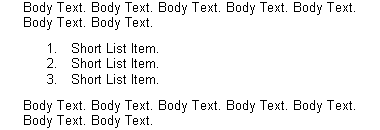
Figure 2: List without space between items
Lists with space between items are used if items go over two or more lines. The extra space aids in distinguishing the different items. The space between items should be the same as the space recommended between block paragraphs.
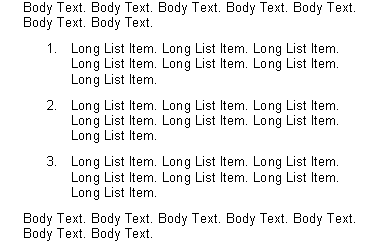
Figure 3: List with space between items
Punctuation at the end of items should be kept to a minimum. Commas or semicolons at the end of each item are not necessary. Use periods if the items consist of complete sentences. However, if the sentences are short, periods are not even necessary.
There are two main types of lists:
- bulleted list
- numbered lists
Bulleted Lists
In bulleted lists each item is identified by a symbol. In typeset text this is usually a bullet, hence the name. In HTML, bulleted lists are called unordered lists.
Bulleted lists are used if the items in the list do not follow any particular order. Otherwise a numbered list should be used. If bulleted lists become too large, i.e, contain more than ten items, it becomes difficult to maintain the position in the list. We try to limit bulleted lists to about ten to fifteen items or convert longer lists to numbered lists.
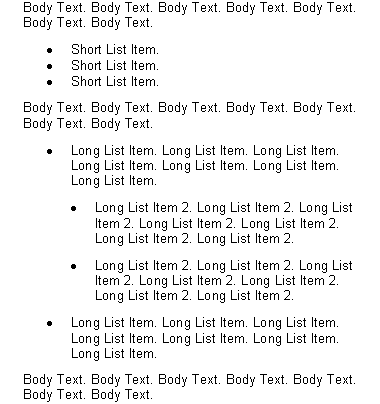
Figure 4: Bulleted lists
Numbered Lists
In numbered lists each item is identified by an enumerator. In typeset text this is usually a number, hence the name. In HTML, numbered lists are called ordered lists.
The enumerator can be:
- arabic numerals (1, 2, 3, 4, etc.)
- lowercase letters (a, b, c, d, etc.)
- uppercase letters (A, B, C, D, etc.)
- roman lowercase numerals (i, ii, iii, iv, etc.)
- roman uppercase numerals (I, II, III, IV, etc.)
In technical documents the first level is usually enumerated using arabic numerals followed by a period and the second level using lowercase letters followed by a closing parenthesis.
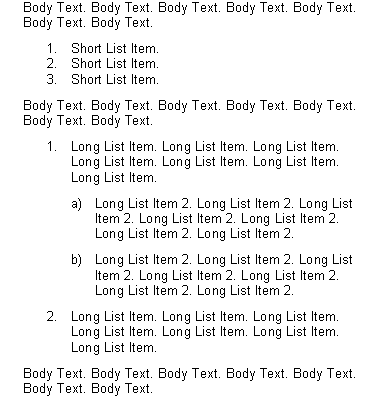
Figure 5: Numbered lists
List Continuation
If list items contain several distinct paragraphs, each paragraph is separated by some space. List continuations are usually only used in lists with space between items. The space between paragraphs should be the same as the space between items.
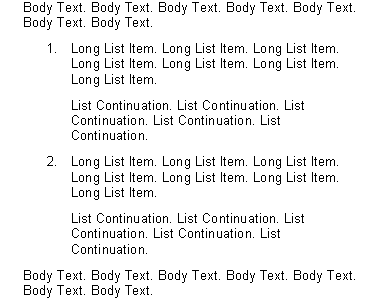
Figure 6: List continuations